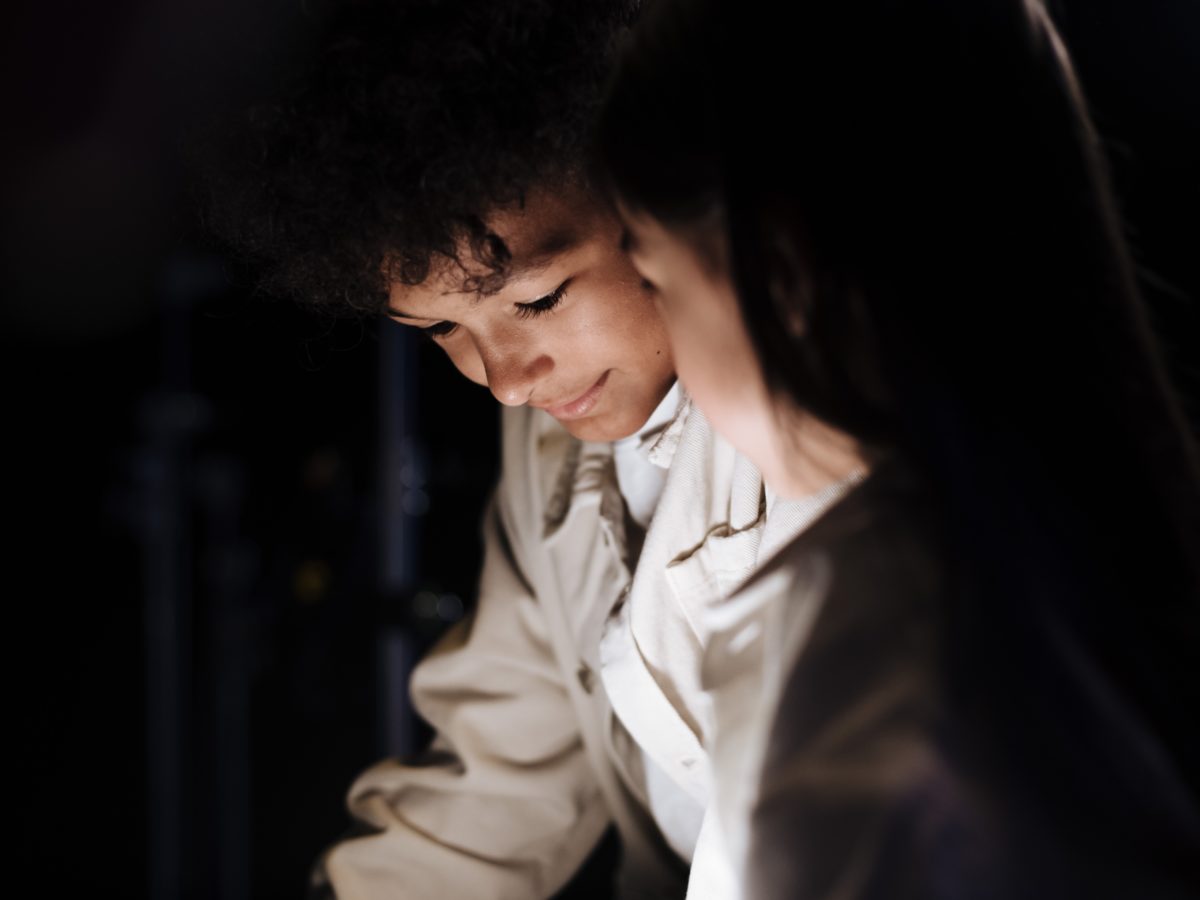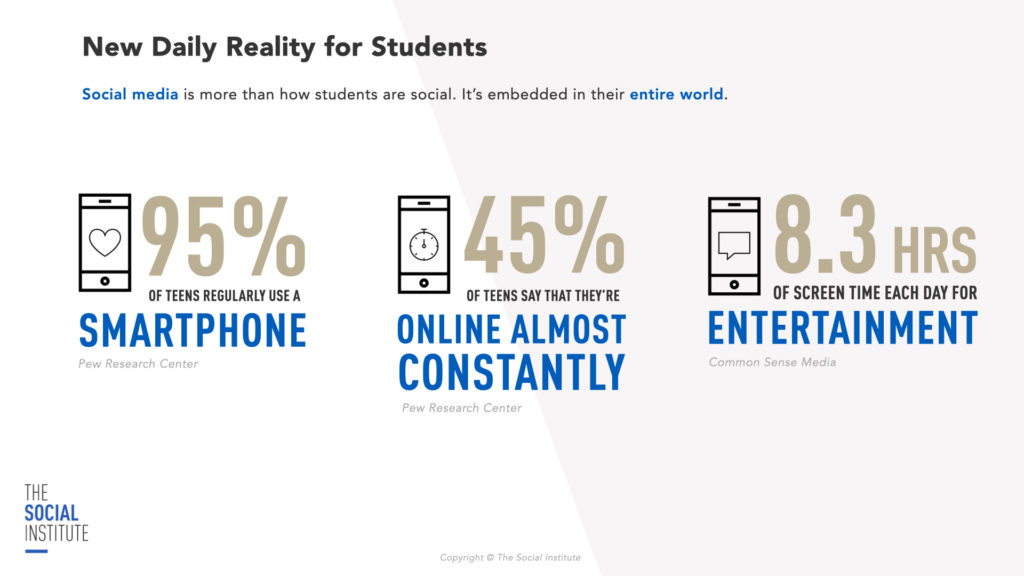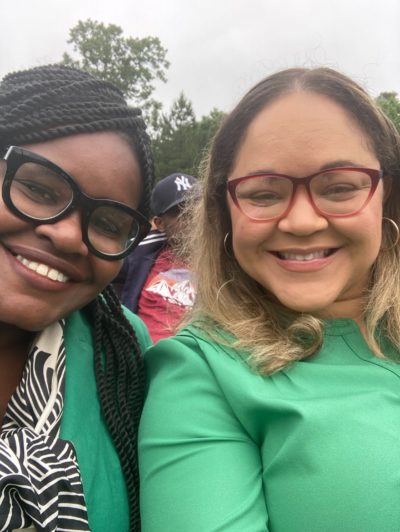

Today’s middle and high schoolers have never known a world without social media and technology. It’s embedded into their entire lives. By using technology in the classroom and having daily conversations over social media, they use them both to connect and communicate with the world around them.
A Pew Research Center study found that 95% of teens regularly use smartphones and 45% of teens say that they are online almost constantly. Students’ social experiences and the ways they use social media and technology are constantly changing.
How can educators keep up to ensure students act with high character — no matter what social media app, group chat, video game, or viral video they’re engaging with?


In response to these high numbers, schools are reimagining digital citizenship by elevating how they proactively equip students to make positive choices online. How? They’re incorporating current events that resonate with students.
How innovative schools are reimagining digital citizenship
In my work with schools and students, I’ve learned that attempts by adults to teach kids about “digital citizenship” quickly fall on deaf ears. It’s meaningless to them because it divides a child’s world into two halves: digital and physical. For kids who are digital natives, there is no separation. It’s simply their world.
Digital citizenship is life skills education for the modern day.
So let’s first stop separating their world with terms like “digital footprint,” “digital citizenship,” and “online reputation.” Everything they do, everywhere, is a reflection of their values and character. Everything they do, both online and offline, impacts their reputation.
Some believe that the scare-and-restrict approach to this education is the answer. They think, “If students don’t use certain apps or devices, they can’t use them inappropriately.” We know this rarely works. If a student doesn’t use social media or technology in your presence, they probably use it somewhere else. By proactively equipping students with the tools to use social media and technology positively, students will learn to use it to fuel their health, happiness, and success.
At The Social Institute, instead of focusing only on the don’ts, we highlight the do’s of social media and tech, and we empower educators to do the same. The International Society for Technology in Education (ISTE) also supports this approach. They created five competencies of digital citizenship that redefine how students see digital citizenship and how we can teach these competencies to empower students to thrive online and off:
- Inclusive: Being open to hearing and respectfully recognizing different viewpoints as we consume content.
- Informed: Evaluating the accuracy and the validity of the media we view.
- Engaged: Using tech for civic engagement and as a force for good.
- Balanced: Making enforced decisions and being intentional about our time.
- Alert: Staying aware of our actions while also creating a safe space for others online.
Making digital citizenship relevant through current events
We live in a world where we can get the latest news and headlines at the tip of our fingers.
The Social Institute recently asked over 1,400 students where they hear the most information regarding current events. Results showed that social media was their main go-to source; followed by friends, families, and teachers; TV and podcasts came in third, and coming in last were news apps and email newsletters.


As we consider how students are consuming content, here are a few tools and creative strategies schools are using to elevate learning and literacy:
- Interactive media bias chart: Double down on the reliability of where you and your students are getting your content. A study done by Statista found that 67% of Americans believe that fake news causes confusion. This chart is a helpful resource that helps you stay mindful of where you get your information, empowering digital citizenship and spreading truthful information. What makes the Interactive Media Chart different is that it looks at the source itself, analyzes where it comes from, and rates its reliability — empowering users to feel confident about where they get their content.
- Informable: 1 in 4 posts on Instagram are advertisements. Test your literacy knowledge in this interactive app that challenges users to think critically about the content they see online. Score points for accuracy and speed across three difficulty levels in four distinct modes. The ability to decipher advertisements versus opinions equips users to feel confident knowing what is real and what is fake online and off.
- Current events: Trending topics provide a special gateway to having a relatable, engaging discussion with students. For example, for Women’s History Month, we can discuss with students which positive, trailblazing, glass-ceiling-shattering role models people follow on TikTok or YouTube. When Russia invaded Ukraine, we can discuss with students the power of social media and how quickly and easily misinformation can spread. Consider what’s trending and how you can channel that topic into a meaningful discussion about making positive decisions online.
Students can’t be what they can’t see
Marian Wright Edelman, an American activist for the rights of children, famously said it best: “You can’t be what you can’t see.” As educators, we can use viral moments and trending topics to highlight positive role models who are using technology for good.
Students need to see how the Ukraine Minister and Elon Musk connected over social media, which sparked Musk to give all Ukraine citizens free satellite internet service.


Students need to see Greta Thunberg, who is changing the world one tweet at a time. With over five million followers on Twitter, at only 19 years old, Thunberg uses her platform to inspire environmental activism, empowering others to speak up for what they believe in.
And we don’t have to be on the world stage in order to create positive change.
Consider how a group of high schoolers in Winnipeg, Canada used social media, Google Maps, and satellite images to help their teacher’s biological father escape from Kyiv, Ukraine, during the recent Russian invasion. The bottom line — as educators, we have the opportunity to empower our students to make healthy, high-character choices online and off. As current events unfold, let’s use these topics to not only inform our students but equip them with the life skills they need to make high-character decisions. And while these current events are ever-unfolding, the skills that we can teach our students will be lifelong and timeless.




